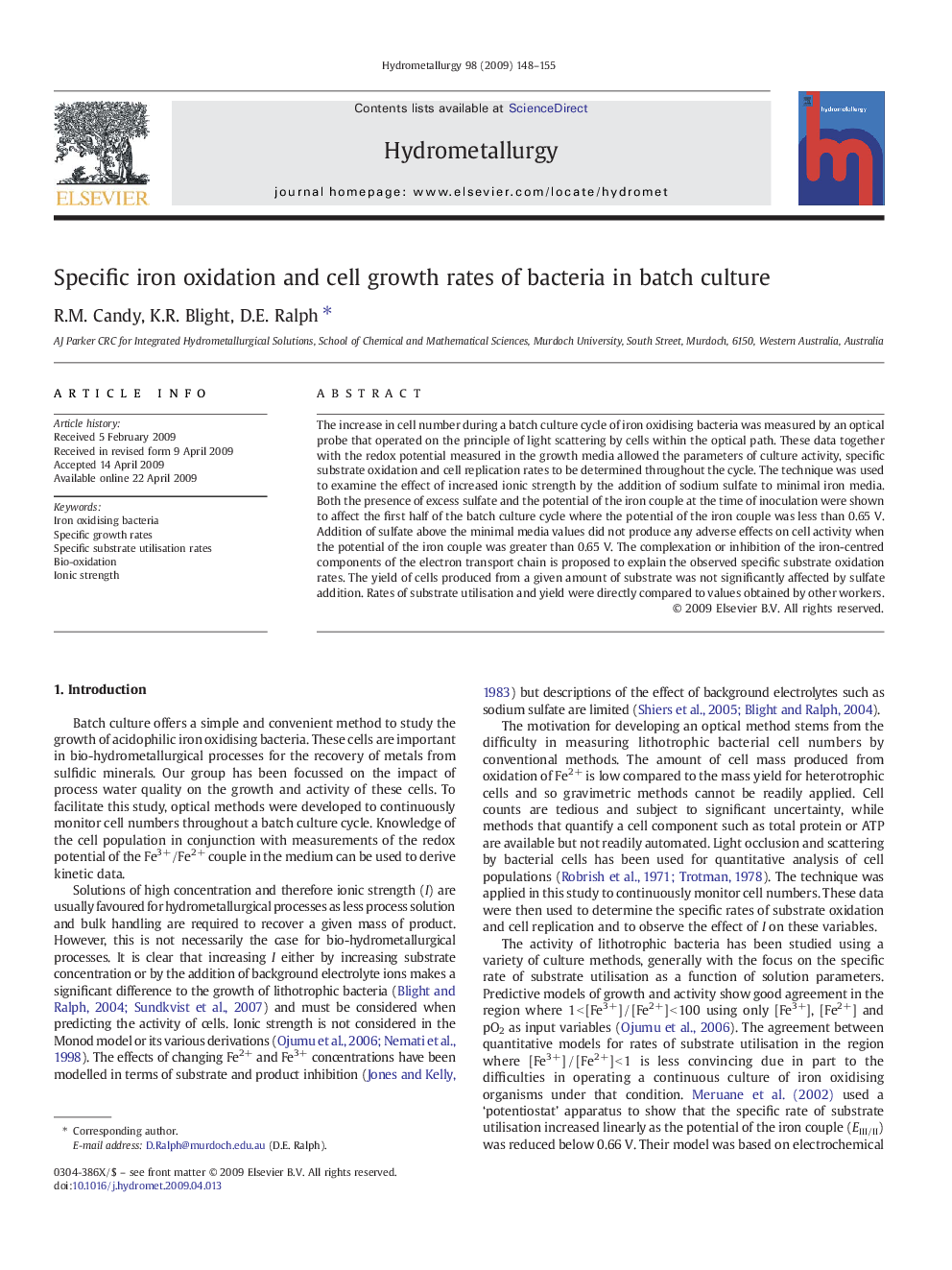| Article ID | Journal | Published Year | Pages | File Type |
|---|---|---|---|---|
| 212944 | Hydrometallurgy | 2009 | 8 Pages |
The increase in cell number during a batch culture cycle of iron oxidising bacteria was measured by an optical probe that operated on the principle of light scattering by cells within the optical path. These data together with the redox potential measured in the growth media allowed the parameters of culture activity, specific substrate oxidation and cell replication rates to be determined throughout the cycle. The technique was used to examine the effect of increased ionic strength by the addition of sodium sulfate to minimal iron media. Both the presence of excess sulfate and the potential of the iron couple at the time of inoculation were shown to affect the first half of the batch culture cycle where the potential of the iron couple was less than 0.65 V. Addition of sulfate above the minimal media values did not produce any adverse effects on cell activity when the potential of the iron couple was greater than 0.65 V. The complexation or inhibition of the iron-centred components of the electron transport chain is proposed to explain the observed specific substrate oxidation rates. The yield of cells produced from a given amount of substrate was not significantly affected by sulfate addition. Rates of substrate utilisation and yield were directly compared to values obtained by other workers.
